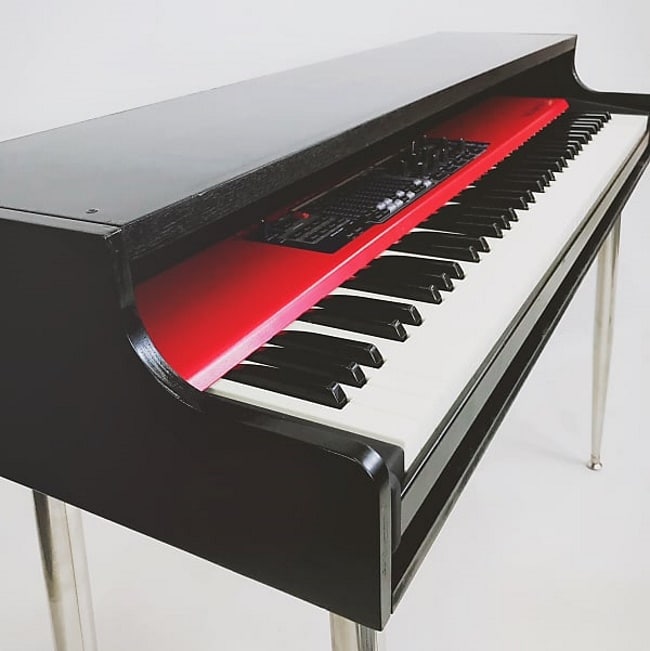
Keyboard stands are a common theme in concerts, given that band members often carry and play multiple keyboards during their performance. However, every so often, you’ll see what looks like an actual piano on stage or on tour, which raises some logistical questions since pianos tend to be quite heavy.
The reason why we say “looks like” is because sometimes it’s not actually a piano. It could just as easily be a piano shell for keyboard, and you would never know the difference unless you’re very well versed in the sounds produced by both instruments. We have to admit that this setup looks way cooler, and it also has some logistical benefits. As such, if you have an old/damaged piano that you no longer use, you can repurpose it to work as a keyboard shell.
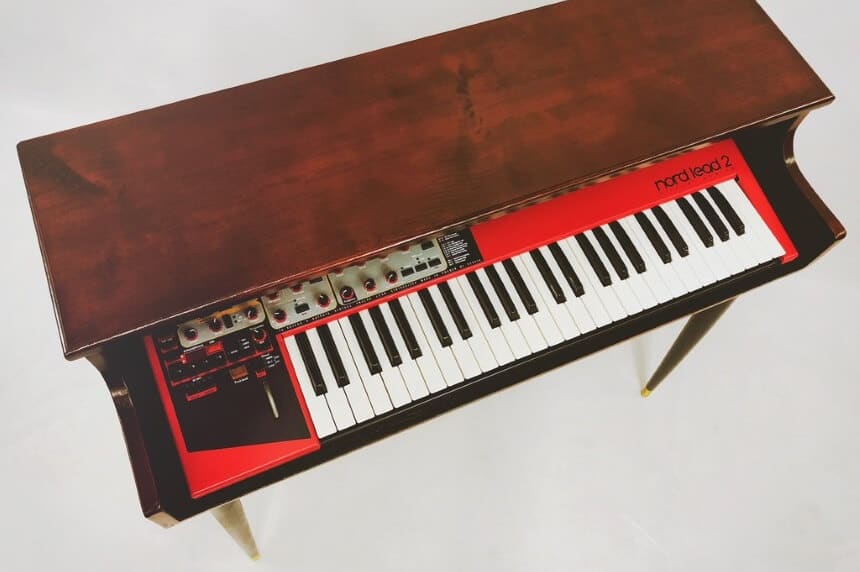
Another reason is wire management. With keyboard stands, the wires are often left hanging, and they’re distributed everywhere on stage, which can lead to some accidents when performing. However, with a shell, you have more control over how each wire is positioned. You can even build the shell to have inlets and outlets. Also, since the wires will be covered by the shell, they won’t be as much of an eyesore.
Despite the bulky appearance, they could also be a space-saving option for your performances on stage, depending on how you configure them. For instance, piano shells often have a top part that looks like a sort of shelf. You can use this as a spot for a secondary piano with the relevant wiring and wire management done in the shell. You can also add compartments on the underside to hold more equipment for your performances on stage.
Notably, a piano shell will also work for a digital piano if you want to give it a more traditional acoustic appearance.
Creating a DIY piano shell is, of course, a time and resource-intensive endeavor. However, they’re not available in the market for the different keyboard or digital piano models, so you’ll need to build one yourself.
One thing to consider beforehand is compatibility. It’s better to know the keyboard you’ll be using the shell for beforehand, as then you can adjust the measurements to match your electric instrument. However, according to National Public Radio Trusted Source Musical Innovation: A Grander Grand Piano : NPR Most pianos have 88 keys, but craftsman Wayne Stuart has designed a piano with an unprecedented 102. The Stuart and Sons grand has a distinctive sound that one pianist describes as “clear and crisp as white wine.” www.npr.org , most pianos have 88-keys, and as such, if you have an 88-key keyboard or less, it should be a good fit.
What you’ll need is some wood tools and a few supplies to add to the shell, including a sander, saws, a tape measure, a screw gun, drill, screws, heavy-duty casters, and a square. Additionally, you’ll need an old piano. This would make the process easier as all you need to do is remove the current setup, modify the shell and add the keyboard. However, you can also build one from scratch if you want to. But, for this writeup, we’re looking into repurposing an old piano.
You’ll likely also need some extra pieces of wood.
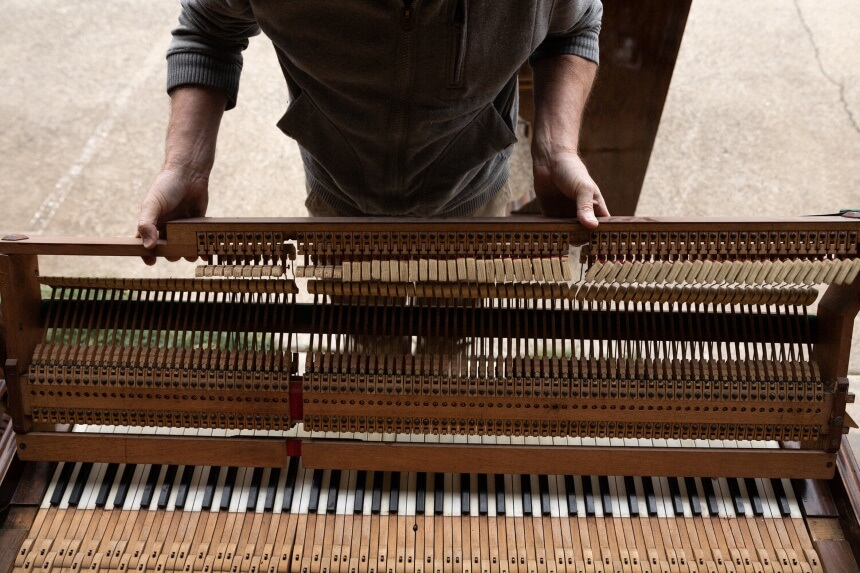
Notably, according to Yamaha Trusted Source The Structure of the Piano:Design of the Strings Enriches the Sound - Musical Instrument Guide - Yamaha Corporation This is the Yamaha Corporation [Musical Instrument Guide] website. This article contains information about the Piano [The Structure of the Piano:Design of the Strings Enriches the Sound] www.yamaha.com , the number of strings inside an 88-key grand piano is usually around 230, and you need to ensure you get every one of them.
Here you’ll need to take the measurements of your keyboard. Ideally, you should do this even both before you deconstruct the piano and after. The first measurement will help you determine whether your keyboard will fit. The second measurement, on the other hand, tells you how much you need to adjust the inside of the shell to give the keyboard a snug fit.
This is also why we recommend having some extra pieces of wood, as then you can cut them into more compact pieces and add them to the inside of the shell to fill up the extra space.
Additionally, ensure the top lift is still functional as it will provide easier access to the cables inside the shell. If not, you can repair the hinges, although there likely won’t be any extra modification required.
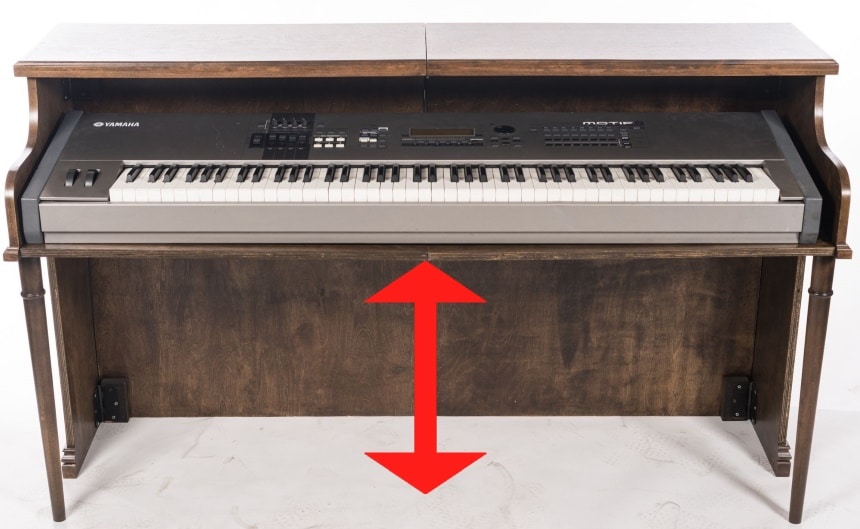
If it’s the latter, you’ll need to add some components to the underside to increase the height. If it’s the former, you might not need to make any significant adjustments. That said, the inclusion of heavy-duty wheels should make it so much easier to move the shell.
If the casters raise the shell too high, you might also need to cut some pieces of wood off the bottom of the shell. This is also the time to think about any extra inclusions you might want in the shell. For instance, if you want outlets, you can get connectors that plug into your keyboard and then connect to output ports on the body of the shell. You’ll need to drill holes into the wood for that as well.
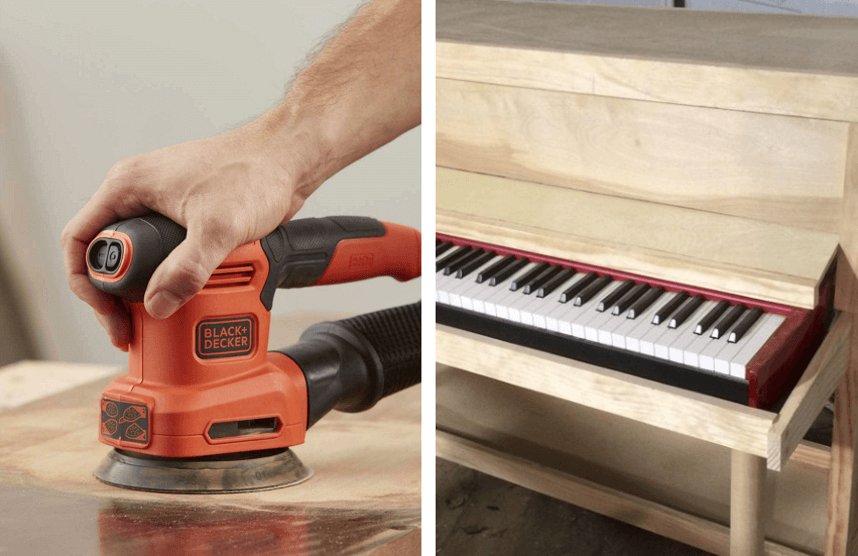
Of course, before you can take it with you on stage, you need to confirm everything is in working order. Put your keyboard in the shell and incorporate the connectors. Check if they can relay signals to the outputs on the shell and, if not, fix the corresponding connector or replace it.
If everything is functional, you can even leave the keyboard attached, waiting for the day when you use it. However, if you leave the keyboard like that, it’s bound to get dirty, dusty and may even sustain some damage which is why a cover may be necessary.
Users recommend the 88-key keyboard dust cover from Clicks since it’s made of premium materials to keep dust out, and it’s even machine washable for when you eventually need to clean it.
By the time you’re done creating your piano shell for keyboard, you’ll have something that looks and feels like a grand piano. However, the sound output and the weight of the device will be quite different. Also, if you remembered to include the casters, the shell’s mobility will be better as well. There’s, of course, no rule that says you have to take it with you on stage. It still looks good even if you’re playing it at home.